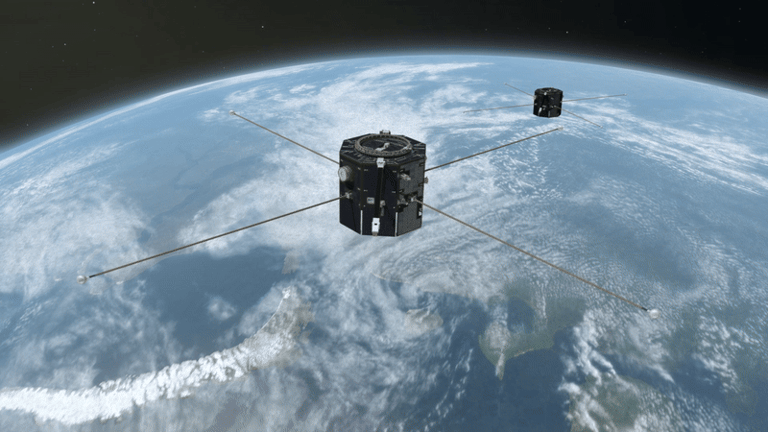NASA's TRACERS Mission Set to Launch in 2025 to Unveil Earth's Magnetic Mysteries
July 16, 2025
The TRACERS mission, which involves multiple institutions and is led by the University of Iowa, aims to provide comprehensive data on magnetic reconnection, a process that can release energy equivalent to what the U.S. consumes in a day.
The satellites will operate in a Sun-synchronous orbit, flying from pole to pole, and are designed to capture thousands of magnetic reconnection events, providing rapid, multiple measurements to better understand how these processes influence space weather.
This mission builds on previous studies like TRICE-2, which provided only single snapshots of magnetic reconnection, highlighting the advantages of multi-spacecraft technology for understanding these complex and dynamic systems.
Understanding magnetic reconnection is crucial because it creates openings in Earth's magnetic field, especially at the polar cusps, allowing charged particles to enter the atmosphere and cause auroras, as well as disrupting communication and power systems.
NASA's upcoming TRACERS mission, scheduled for launch no earlier than late July 2025 on a SpaceX Falcon 9 rocket from Vandenberg Space Force Base, involves two twin satellites orbiting Earth at approximately 360 miles in a Sun-synchronous path, flying pole to pole to study the interaction between solar wind and Earth's magnetosphere.
Managed by NASA's Heliophysics Explorers Program Office and led by David Miles from the University of Iowa, the TRACERS mission involves collaboration with multiple institutions, including the Southwest Research Institute, to investigate magnetic reconnection and space weather phenomena.
NASA will hold a media teleconference on July 17, 2025, at 11 a.m. EDT to discuss the TRACERS mission, emphasizing its goal to study Earth's magnetic shield and the dynamic processes of magnetic reconnection.
TRACERS will work alongside other NASA heliophysics missions like the Parker Solar Probe, EZIE, and PUNCH to deepen understanding of solar wind interactions and their effects on Earth's magnetic environment.
The mission aims to explore how Earth's magnetosphere protects the planet from solar wind particles—solar wind traveling over a million miles per hour that can cause magnetic reconnection, especially at polar cusps, leading to phenomena like auroras and potential disruptions to communication and power systems.
The spacecraft are scheduled to launch in late July 2025 from Vandenberg Space Force Base, marking a significant step forward in space weather research and our understanding of solar-terrestrial interactions.
In addition to TRACERS, NASA will launch three other payloads, including the Athena EPIC SmallSat, a Polylingual Experimental Terminal, and the REAL CubeSat from Dartmouth College, expanding the scope of space weather research.
Summary based on 2 sources
Get a daily email with more Space News stories
Sources

NASA • Jul 17, 2025
NASA to Brief Media on New Mission to Study Earth’s Magnetic Shield - NASA
NASA Science • Jul 16, 2025
NASA’s TRACERS Studies Magnetic Reconnection